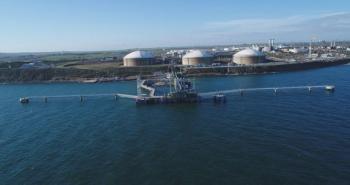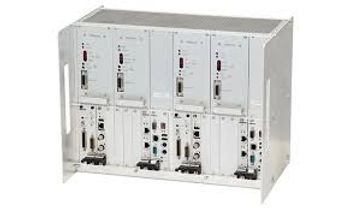
TURBOMACHINERY FOR FPSO VESSELS
A floating production, storage and offloading (FPSO) vessel is used by the offshore oil & gas industry for the processing of hydrocarbons. It receives hydrocarbons from subsea or nearby platforms, processes them, and stores them until they can be offloaded to a tanker. FPSOs are preferred in frontier offshore regions as they are easy to move and operate, and do not require a local pipeline infrastructure to export oil. In some cases, they are converted oil tankers, and in others they are purpose-built. FPSO vessels are effective in remote or deepwater locations where seabed pipelines are not cost effective. The first FPSO was built at end of 1970s. Today, over 200 such vessels are deployed worldwide. FPSOs have been historically used in areas such as the North Sea, offshore Brazil, Asia, Australia, Pacific, Mediterranean Sea and offshore West Africa.
FPSO processing equipment is similar to what would be found on a production platform. Usually built in modules, this includes water separation, gas treatment, oil processing, water injection and gas compression. Many different types of pump and turbomachinery are also needed. Layout of topside facilities is usually driven by the sequential placement of processing systems coupled with safety compliance policies. No single layout works for all configurations. There are, however, common rules influencing layout. Each major system is typically packaged, skid-mounted and installed as a one-piece module. Modularized components are particularly important for turbomachinery.
Safety is paramount. Modules are placed away from living quarters and control buildings. Only benign or non-hazardous equipment is located near commonly occupied safe areas. This policy drives the overall configuration of an FPSO. More hazardous systems like gas compressors, production modules, and vents or flares usually are placed at one end of the vessel. These modules are placed in a sequential order following a decreasing level of risk; low risk units might be on the side of accommodations, but still a proper distance away. High-risk facilities are always on the side of FPSO farthest away from personnel areas.
Motion-sensitive equipment and machinery is typically placed near the vessel’s center. High-speed rotating equipment, such as compressors and generators is usually aligned along the length of a FPSO. Large reciprocating compressors are often placed in cylinders transverse to the FPSO, using bulkheads to resist unbalanced forces and moments. When crude oil properties necessitate, additional treating equipment is incorporated into an FPSO. Crude oil heating, desalting, sand or sulfur removal, and heavy oil dilution are such additions. All require additional sets of pumps and specialized turbomachinery.
Some compressed gas may be used for lift gas or re-injection gas to enhance oil production. Such an option, though, usually requires the addition of large turbocompressor elements. When water injection pumps are needed to maintain reservoir pressure or dispose of produced water, dedicated pump sets can be added. When seawater is injected into the oil reservoir, powerful seawater pump sets are included along with additional systems to treat and deoxygenate seawater.
FPSO machinery should be fabricated for reliability and availability. It should be compact, lightweight, and designed with safety in mind. It should also be properly monitored to prevent unnecessary downtime. Offshore gas compressors are used for various tasks including reservoir management, production enhancement, and the transmission or processing of gas. A variety of different refrigeration compressors have been used in FPSOs, such as those needed for Liquefied Petroleum Gas (LPG) refrigeration.
A commonly-used package is a centrifugal compressor for propane and refrigeration unit (a two-stage cooling cycle using a closed loop of propane as the refrigerant). The compressors vary from conventional to integrally geared centrifugal compressors. The propane refrigeration unit is often installed in an enclosed deckhouse located topside. A re-liquefaction unit is usually required for an LPG FPSO. It is usually provided to separately handle the boil-off gas from the propane and butane storage tanks.
Too often, it is different from the models commonly deployed on onshore LPG tankers. As a rough indication, compressors in a medium-sized FPSO might consume anywhere from 5 to 20 MW of power. Since an FPSO can be moved from one offshore field to another, operating conditions can shift markedly. Therefore, operational flexibility is an important requirement. This can include varying gas flows, different gas compositions, and a wide range of pressure ratios. Compressors ate generally run constantly due to project economics. This presents a challenge for compressors in harsh offshore environments. (Turbomachinery International July/August 2017 p. 30). Adopting a condition-based maintenance strategy can minimize downtime.
Newsletter
Power your knowledge with the latest in turbine technology, engineering advances, and energy solutions—subscribe to Turbomachinery International today.




